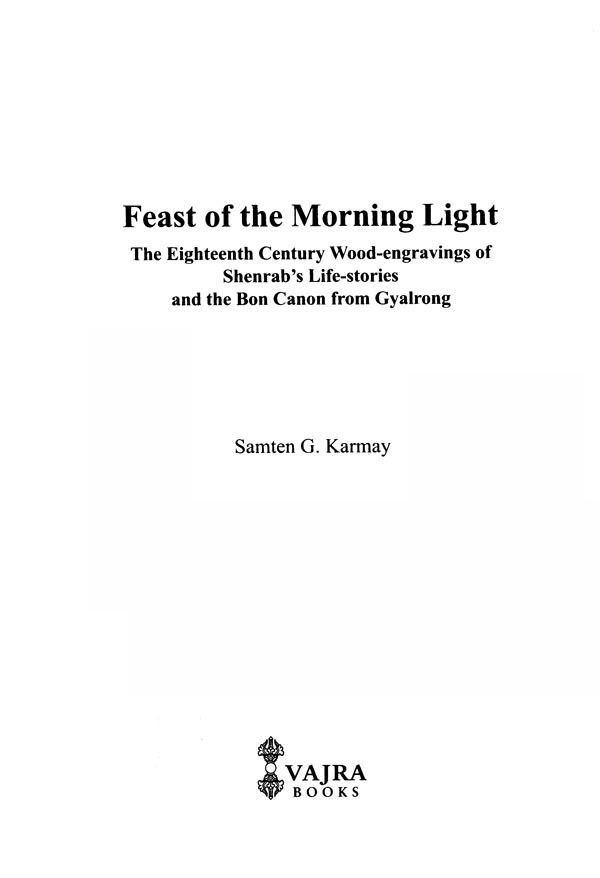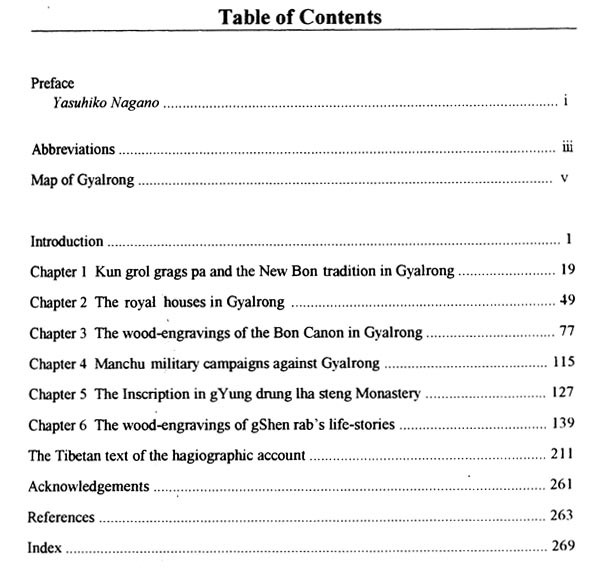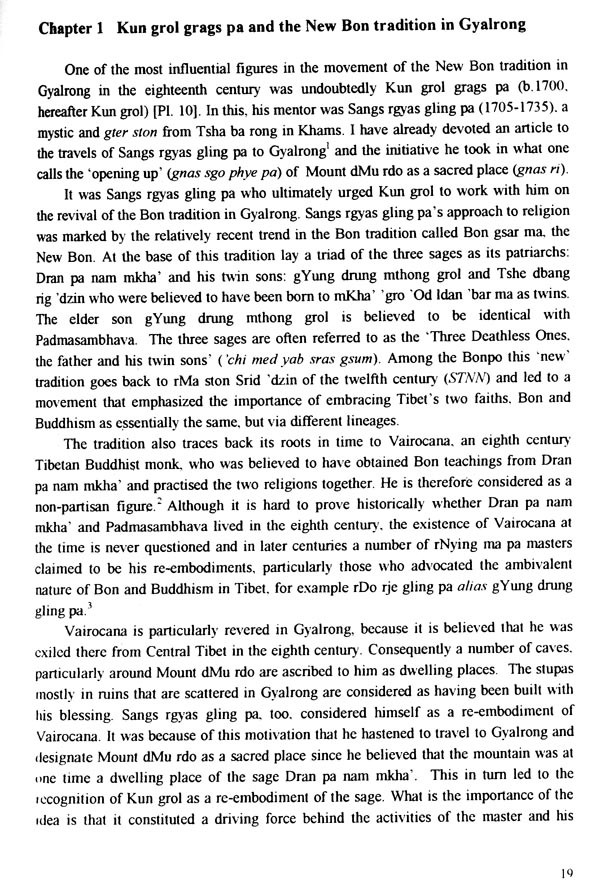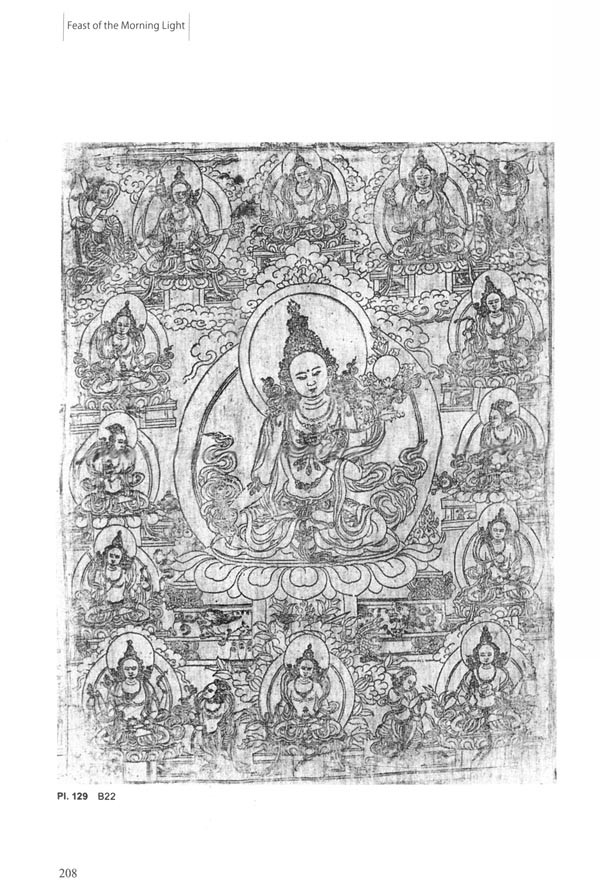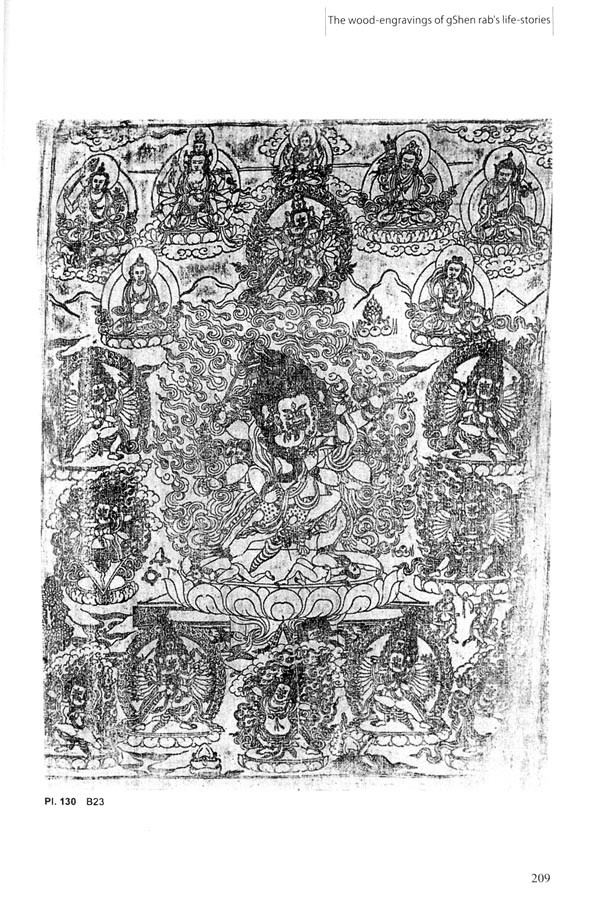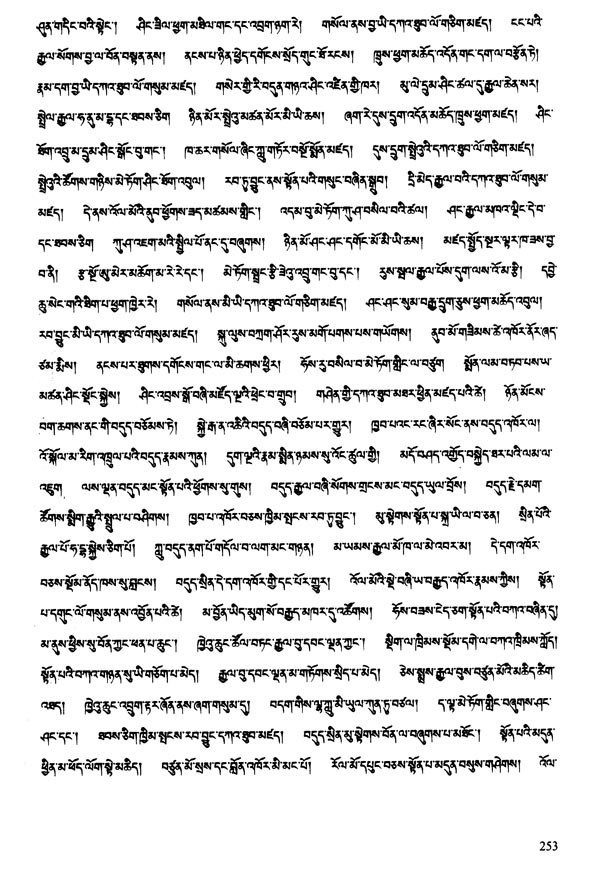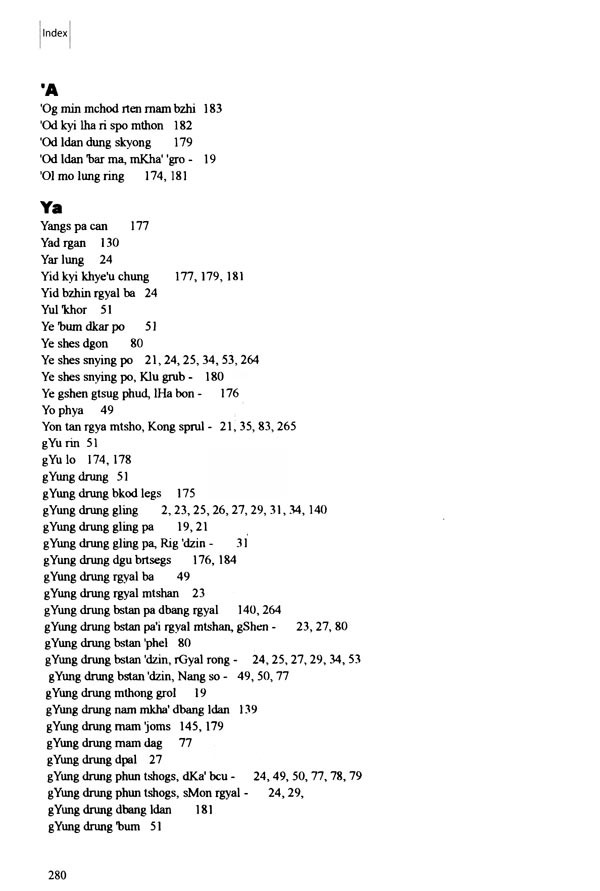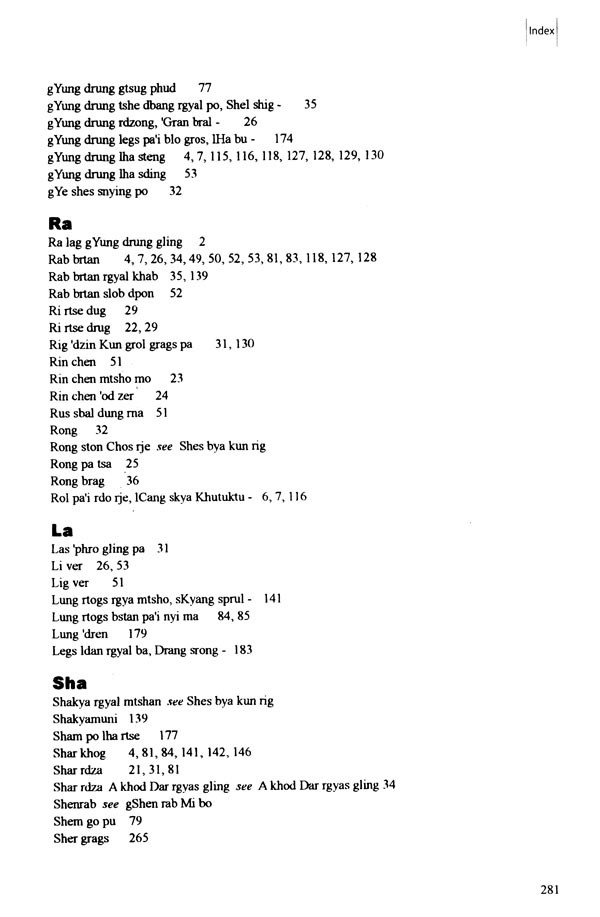
Feast of the Morning Light- The Eighteenth Century Wood-Engravings of Shenrab's Life-Stories and the Bon Canon from Gyalrong
Book Specification
| Item Code: | AZG933 |
| Author: | Samten G. Karmay |
| Publisher: | Vajra Books, Nepal |
| Language: | ENGLISH AND TIBETAN |
| Edition: | 2017 |
| ISBN: | 9789937623742 |
| Pages: | 292 (Throughout B/w Illustrations) |
| Cover: | PAPERBACK |
| Other Details | 9.50x7.00 inch |
| Weight | 490 gm |
Book Description
Mandalas of the Bon Religion (2000)
Bon Shadies 2 SER 15 New Horizons in Bon Studies (2000)
Bon Studies 3 SER 19 New Research on Zhangzhong and Related Himalayan Languages (2001)
Bon Studies 4 SER 24 A Catalogue of the New Katen Texts (2001)
Collection of Bonpo Bon Studies $ SER 25 A Catalogue of the New Collection of Bonpo Katen Texts-Indices (2001) SER 32 The Call of the Blue Cuckoo (2002)
Bon Studies 6 Bon Studies 7 Bon Studies & SER 40 A Catalogue of the Bon Kanjur (2003)
SER 38 A Survey of Bonpo Monasteries and Temples in Tibet and the Himalaya (2003)
In these projects, I have been making a sustained effort to develop a solid foundation for research on Bon culture. Thanks to the generous assistance of the National Museum of Ethnology, Osaka, Japan. I have been able to successfully collect basic research materials, such as mandala, thangka, and a huge collection of Bonpo canonical texts.
The present volume is a detailed descriptive analysis of a set of Gyalrong wood engravings, which were imprinted in the 1940's from woodblocks kept at a royal palace in Gyalrong These woodblocks seem to have been destroyed during the Chinese Cultural Revolution. Since the 11" century, Gyalrong has been a stronghold of the Bon religion and Bon culture still alive and well among the Gyalrong people.
The name of this region in Tibetan is spelled as rGyal rong which is derived from its full name rGyal mo tsha ba rong? It is related to the name of the river rGyal mo. dngul chu which is the main river in the region. The toponym Gyalrong in Tibetan usually covers the whole region that had originally included eighteen principalities of varying sizes. The equivalent name of the region in Chinese is often given as Jinchuan, but in fact Jinchuan designates only two principalities in Gyalrong: bTsan la and Chu chen. The Chinese use the name Jiarong for the whole region of Gyalrong. The name Jiarong is obviously a transcription of the Tibetan name ragyal rong.
In Tibetan geographical vocabulary the region is described as rong, gorge. (Pl. 1 3] It is one of the four great rong (rong chen bzhi). They are: Kong po rong. A stag rong. Tsha ba rong and rGyal mo rong. The first refers to Kong po where Mount Bon ri is situated, the exact location of the second rong remains unknown, the third is the region of Mount Tsha ba dkar po in south-east Tibet and the fourth refers to Gyalrong Indeed, the main valley of the region is long and very narrow. It is cut deep by the huge river called rGyal mo dngul chu which flows through it. The river starts in the north of the valley from the confluence of rDo chu which runs from the area of 'Dzam thang and So mang chu that flows through the valley of Tsha kho. Downstream after about 200 kilometers from the confluence the river is called Dadu in Chinese and here the valley also gradually widens out at a place called ICags zam, 'Iron bridge. From this point the landscape and its inhabitants become explicitly Chinese. The iron suspension bridge over the river is believed to have been originally constructed by the Tibetan engineer Thang stong rgyal po (b. 1385). [PL. 4] It marks the traditional Tibeto-Chinese border in the area.
**Contents and Sample Pages**
